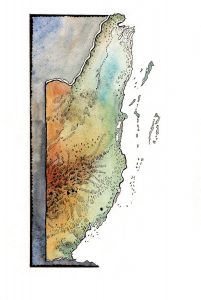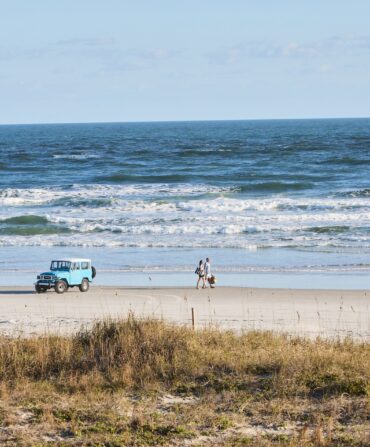Travel
The Hidden Caribbean: Belize by Water
You don’t need to be an experienced sailor to have a maritime adventure in a magical place

Photo: Ian Brown
When I was young in my writing career, I wrote a novel that featured many scenes set among the pristine cays and ramshackle beach bars of Belize.
I had never actually been to Belize. I just loved the idea of it.
In the intervening years, I have finagled all sorts of reasons to actually travel there—wonderworld snorkeling on the planet’s second largest barrier reef; exploring Mayan ruins to see stone stelae last touched by denizens of a lost empire still being unearthed in the jungles; swimming with massive whale sharks; stalking the shallow flats, trying to catch a sleek bonefish or a bucket-mouthed tarpon, or far less successfully, the elusive and shiny, hubcap-shaped permit.
It’s always better than I imagined in that dumb novel.
 I’ve never been more in love with Belize than when sailing in its viridescent waters. The more than 600-mile-long Mesoamerican Reef breaks the ocean swell and calms Belize’s 3,000 square miles of sailing grounds inside it, creating gentle, rock-a-bye nights. The reduced churn also enables looking-glass clarity, revealing some sixty coral and five hundred tropical fish species. Snorkeling among purple and yellow fan corals, it’s easy to see eagle rays winging by or massive collections of reef fish flitting like multicolored glitter over vast coralscapes.
I’ve never been more in love with Belize than when sailing in its viridescent waters. The more than 600-mile-long Mesoamerican Reef breaks the ocean swell and calms Belize’s 3,000 square miles of sailing grounds inside it, creating gentle, rock-a-bye nights. The reduced churn also enables looking-glass clarity, revealing some sixty coral and five hundred tropical fish species. Snorkeling among purple and yellow fan corals, it’s easy to see eagle rays winging by or massive collections of reef fish flitting like multicolored glitter over vast coralscapes.
You don’t have to be a sailor to sail these waters. Charter companies such as the Moorings and Sunsail offer varying options, from bareboat self-provisioning to a full crew that handles the boat and prepares sophisticated meals with Caribbean flavors. You just show up and set off for the Sapodilla Cayes. Or Ranguana Caye. Or Rendezvous Caye. Or Seal Caye. That’s the beauty of your own floating hotel: On a boat you’re unanchored. Every morning you can awake to a brand-new tableau of land and sea and sky. All day you remain immersed in places that shore-bound travelers are taking excursions to reach, and you explore them at your own pace. The fecundity of the water you sail upon means any average day might contain a school of blue tangs flowing among staghorn and vast green blobs of brain coral, or a manatee floating over turtle grass, or sharks or dolphins or sea turtles. At night you fall asleep swathed by a dazzle of stars on a slow waltz of ocean.
When you take a boat trip through the four hundred islands that lie off Belizean shores, it helps to embrace the local laid-backitude and a certain makeshift ethic. When a Belizean bartender in a thatch-roofed outpost offers you a Trust Me drink, try it (it might well be a delicious, coconutty One Barrel rum and lime juice). When you chance upon a local panga piloted by free-diving spearfishermen, it’s a perfect opportunity to riffle through your provisions to see what they might want in trade (on my last trip, two quarts of pineapple juice and a frozen key lime pie yielded red snapper fillets for four).
Belizeans by and large remain who they are, not at all impressed with impressing you, though happy that you came. If you ask, you hear it in stories, glimpses of lives beyond our correlatives. My first fishing guide told me about catching a six-foot sawfish on a hand line when he was young while fishing for small sharks to feed to his mother’s chickens (too much shark, though, made the eggs taste fishy). A driver once told me that, as a child growing up in the Belizean interior, he saw anteaters snaking their tongues up dogs’ noses to eat their brains.
If you want to understand the cultural roots of magical thinking, moor up and hire a driver to San Ignacio. Nearby, from a primeval jungle of sapodilla, ceiba, and gumbo-limbo trees, rise the Mayan ruins of Xunantunich, built by a culture featuring nature gods (the underworld was ruled by Jaguar), deified ancestors, and shamanistic ritual. Mount the stone steps of the 130-foot-tall Castillo and you share the perspective of the powerful high priests who positioned themselves between the earth and the sky.
Or sail around the full moons in March, April, or May, when red snappers congregate to spawn along the outside edge of the reef, creating clouds of eggs and milt. Then whale sharks roll along, sucking up the slurry like it’s free-floating caviar. It’s perhaps the world’s most predictable chance of being in the water with the enormous, polka-dotted filter feeders. Step overboard with a mask and snorkel and let yourself feel the magic of natural abundance and the humility of a giant, gentle creature that has no concern about the proximity of visitors from another world. Understand, for a moment, your meaning in this place.
Then climb back onboard and rinse off. The crew has conch ceviche and butter-broiled snapper almost ready.








